1925 selected standards and hits
____________________________________
 Has Anybody Seen My Gal? (m. Ray Henderson, w. Samuel M. Lewis and Joseph Widow Young)
Has Anybody Seen My Gal? (m. Ray Henderson, w. Samuel M. Lewis and Joseph Widow Young)- Yes Sir! That’s My Baby (m. Walter Donaldson, w. Gus Kahn)
- Dinah (m. Harry Akst, w. Sam M. Lewis & Joe Young)
- Sweet Georgia Brown (m. Ben Bernie and Maceo Pinkard, w. Kenneth Casey)
- I Never Knew (m. Ted Fio Rito, w. Gus Kahn)
- Always: early recordings, 1926-1927 (Irving Berlin)
- Manhattan (Richard Rodgers, Lorenz Hart)
- Remember (Irving Berlin)
- Who? (m. Jerome Kern, w. Otto Harbach, Oscar Hammerstein II)
- Alabamy Bound (m. Ray Henderson, w. Buddy DeSylva, Bud Green)
- I Wonder Where My Baby is Tonight (m. Walter Donaldson, w. Gus Kahn)
________________________________
Has Anybody Seen My Gal? (m. Ray Henderson, w. Samuel M. Lewis and Joseph Widow Young) aka “Five Foot Two, Eyes of Blue”
From Wikipedia:
Accounts of who originally composed “Has Anybody Seen My Girl?” vary, particularly since the song, especially its lyrics, was often modified. Some sources state that Percy Weinrich wrote the music and Jack Mahoney the lyrics, in 1914.[1] Credit for the most popular version of the song, though, is given to Ray Henderson for the music, and Sam M. Lewis and Joseph Widow Young for the lyrics. It was this version that was [first] recorded by The California Ramblers in 1925.
1925 recordings
Golden Gate Orchestra (California Ramblers)
The provider attaches the following information about the band:
The Golden Gate Orchestra was a pseudonym to the well established California Ramblers who were a popular and prolific jazz group from the 1920s, that recorded hundreds of songs under many different record labels throughout the 1920s. Three of the members of the band, Red Nichols, Jimmy Dorsey, and Tommy Dorsey, would go on to front big bands in later decades.
The original band members were from Ohio, but chose the name California Ramblers because they thought people would be less inclined to listen to a jazz band from the Midwest. They recorded for nearly every independent label in the U.S., Canada and the U.K., using over 100 unique aliases. This excellent record was made in 1925. Vocal by Hall and Ryan.
.
Art Landry’s Orchestra, featuring vocalist Denny “Dinty” Curtis
.
The Melody Sheiks
The band is one of many led by Sam Lanin
.
Gene Austin
personnel:
Gene Austin – vocal
Dave Franklin – piano
May Singhi Breen – ukulele
.
later covers
Has Anybody Seen My Gal? is the title of a 1952 film set in the year 1928. It’s not a musical; but the soundtrack includes several songs from the 192os. Here’s a clip containing the title song and a bit of dialogue. IMDb credits the performance to “the College Boys and Girls.”
.
West End Jazz Band — performance on the train to Hudson Lake, 19 October 2008
Mike Bezin – cornet, Leah Bezin – banjo, Frank Gualtieri – trombone, John Otto – clarinet, Mike Albiniak – drums, Mike Walbridge – tuba, with Andy Schumm – cornet, Dave Bock – trombone. Sue Fischer – washboard, Jack Kuncl – banjo
__________________
 Yes Sir! That’s My Baby (Walter Donaldson, Gus Kahn) was a hit for Ace Brigode in 1925 and for Eddie Cantor in 1930. It was later a hit for Rick Nelson in the 1950s and Frank Sinatra in the 1960s.
Yes Sir! That’s My Baby (Walter Donaldson, Gus Kahn) was a hit for Ace Brigode in 1925 and for Eddie Cantor in 1930. It was later a hit for Rick Nelson in the 1950s and Frank Sinatra in the 1960s.
According to one source, the song was written when Donaldson & Kahn were visiting Eddie Cantor. Cantor’s daughter Marjorie brought out one of her favorite toys, a walking mechanical pig. She wound it up and it started walking in rhythm while two notes kept coming from the little creature. Kahn was inspired and started working [on] lyrics to these notes in rhythm with the pig, coming up with the title and opening line of the chorus in short order. – excerpts from Wikipedia
______________________
Ace Brigode and his 14 Virginians – recorded on 2 June 1925
.
Coon-Sanders Original Nighthawk Orchestra, vocal refrain by C. A. Coon. Recorded July 27, 1925 in Camden, NJ. First issued circa late 1925.
.
Jason Robards in the feature film A Thousand Clowns (1965)
_____________
 Dinah (m. Harry Akst, w.Sam M. Lewis & Joe Young) was introduced in the 1923 musical Kid Boots, a production with a book by William Anthony McGuire and Otto Harbach, music by Harry Tierney, and lyrics by Joseph McCarthy. The show was staged by Edward Royce.
Dinah (m. Harry Akst, w.Sam M. Lewis & Joe Young) was introduced in the 1923 musical Kid Boots, a production with a book by William Anthony McGuire and Otto Harbach, music by Harry Tierney, and lyrics by Joseph McCarthy. The show was staged by Edward Royce.
Produced by Florenz Ziegfeld, the Broadway production, opened on December 31, 1923 at the Earl Carroll Theatre and then moved to the Selwyn Theatre for a total of 489 performances. The cast starred Eddie Cantor and Mary Eaton, with George Olsen and his orchestra.
The show was billed as “A Musical Comedy of Palm Beach and Golf” and was set at The Everglades Club, Palm Beach, Florida. It was a showcase for Eddie Cantor, who played the caddie master at the swank club. He gives golf lessons on the side, with crooked balls so the clients need more instruction. He’s also a bootlegger and a busybody. He can’t be fired, however, because he has something on everyone at the club. The most famous song to come out of the show was Dinah by Sam M. Lewis, Joe Young and Harry Akst, added to the finale during the run for Eddie [Cantor to sing]. – Wikipedia, adapted
The Revelers – recorded in 1925
.
Cliff Edwards & His Hot Combination — 1925
.
Ethel Waters and her Plantation Orchestra – 1926
.
The Boswell Sisters — recorded in December, 1934
______________
Sweet Georgia Brown (m. Ben Bernie and Maceo Pinkard, w. Kenneth Casey)
According to jazzstandards.com (excerpts follow):
The song seems to have been designed with jazz improvisation in mind, and there has been no shortage of improvisers. Jackie McLean based his Donna on the song and Miles Davis recorded it as Dig (1951). On Monk’s Dream (1962), Thelonious Monk included only one new composition, Bright Mississippi, which is also based on the chord changes of Sweet Georgia Brown.
Ben Bernie and his Orchestra – the provider estimates the year of this film footage as 1924-25. A visitor, Ed Rounds, tells me that this early sound film was made by Lee De Forest in 1925. See comments.
.
Bing Crosby — 1932 — includes a chorus of scat by der Bingle
.
Django Reinhardt – (Undated) Djangophiles are invited to identify this recording. The Djangopedia lists six recordings of the song on different dates between 1937 and 1950.
.
Coleman Hawkins & his All Star Band
.
________________
I Never Knew (Ted Fio Rito, Gus Kahn)
Victor Salon Orchestra, conducted by Nathaniel Shilkret — recorded in 1925.
________________
Always (Irving Berlin)
Separate feature page:
______________________
 Manhattan (Richard Rodgers, Lorenz Hart) was written for the revue Garrick Gaieties which debuted in 1925 on Broadway and was the first of three Garrick Gaiety revues, which were subsequently produced in 1926 and 1930. The show parodied current subjects, such as the New York City Subway system and the Theatre Guild (producer of the show).
Manhattan (Richard Rodgers, Lorenz Hart) was written for the revue Garrick Gaieties which debuted in 1925 on Broadway and was the first of three Garrick Gaiety revues, which were subsequently produced in 1926 and 1930. The show parodied current subjects, such as the New York City Subway system and the Theatre Guild (producer of the show).
The revue first opened on Broadway at the Garrick Theatre on May 17, 1925, as a 2-performance benefit for the Theatre Guild. The reviews were favorable, and Rodgers and others persuaded the Theatre Guild to continue the production, which re-opened on June 8, 1925 and ran until November 28, for 211 performances.[2] Several writers contributed the material for the sketches, including Edith Meiser, Sam Jaffe, Benjamin Kaye and Morrie Ryskind. – Wikipedia
The California Ramblers performing as the Golden Gate Orchestra – 1925
.
Ruth Tester and Allan Gould — from a film short called Makers of Melody, shot in the spring of 1929. Richard Rodgers and Lorenz Hart play themselves in the twenty-minute two-reeler. The image below is an excerpt from the biography Lorenz Hart: A Poet on Broadway by Frederick Nolan, 1995, p. 127.
.
(above) A scene in the short Makers of Melody (1929)
Makers of Melody is short film made by Paramount featuring Rodgers and Hart “demonstrating how they had come to write” some of their songs, apparently to a script, though one site describes it as an interview interwoven with song performances. It includes renditions of four songs: Manhattan, The Girl Friend, The Blue Room, and Here in My Arms. The last of these, although I don’t know their order in the film, is performed by Rodgers & Hart. It’s the only one of the four songs in the film which I haven’t found on video.
Lee Wiley — from her 1950 album Night in Manhattan, with Bobby Hackett and Joe Bushkin
.
_______________
Remember (Irving Berlin) aka “You Forgot to Remember”
Please visit our separate feature page:
_________________
Who? (m. Jerome Kern, w. Otto Harbach, Oscar Hammerstein II)
George Olsen’s Orchestra – 1925. From the 1925 musical Sunny. The provider attaches the note: George Olsen’s orchestra was in the pit for the original Broadway run and soon thereafter recorded this version for male trio.
Wikipedia:
The Broadway production (produced by Charles Dillingham and directed by Hassard Short) opened at the New Amsterdam Theatre on September 22, 1925 and ran for 517 performances. Cast: Marilyn Miller (playing Sunny), Jack Donahue, Clifton Webb, Mary Hay, Joseph Cawthorn, Paul Frawley, Cliff Edwards, Pert Kelton, Moss & Fontana, Esther Howard, Dorothy Francis.
.
Marilyn Miller – 1929. Hollywood made a film of Sunny in 1929. Marilyn Miller, who had played the leading part in the Broadway production, was hired by Warner Brothers to reprise the role that made her the highest-paid star on Broadway. – wiki
_____________
I Wonder Where My Baby is Tonight (m. Walter Donaldson, w. Gus Kahn)
Ben Selvin’s Orchestra recording as the Knickerbockers – 1925
.
The Goofus Five – 1925
From the bio in the liner notes of The Goofus Five 1926 to 1927 on Timeless Records, by Brian Rust:
Back in 1924, Ed Kirkeby, the manager of the prestigious American dance band known as the California Ramblers, decided that a quintet of the band within the band would be an excellent novelty, especially for playing popular tunes of the day for dancers who preferred their music with a strong jazz flavour. So it came about that the Little Ramblers were formed; but like the parent band, they recorded only on Columbia. Finding their music was a success, Kirkeby secured contracts with other record companies under the name of the Five Birmingham Babies, and on Okeh as the Goofus Five.
Many people had no idea what a goofus was; to a few the word signified much the same [as] ‘corny’, or out of date, behind the times, simple-minded, obvious. In a musical context, it indicated the strange instrument that looked like a saxophone but sounded like a mouth-organ. Adrian Rollini, the bass saxophonist with the California Ramblers, adapted the goofus for use with the jazz unit [so?] that Okeh records had become identified with it.
.
The Quintette du Hot Club de France – Django and the QHCF recorded the song three times in 1939, twice on 21 March 1939 and once on 17 May 1939, with the same personnel each time: Stephane Grappelly (g), Django Reinhardt, Joseph Reinhardt, Pierre Ferret (g), Emmanuel Soudieux (b).
.
John Green and his Snap Syncopators – recorded on23 April 1977 Heathrow Hotel, London UK




















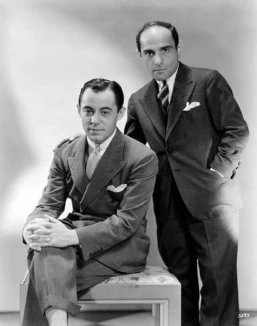

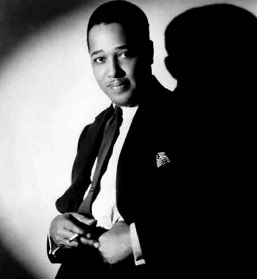


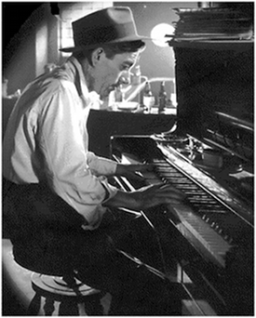
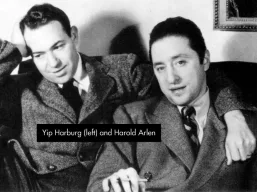




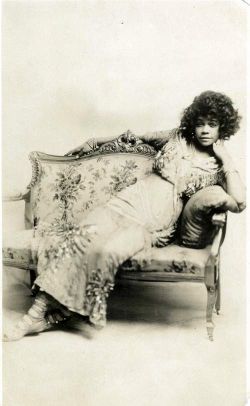










Jul 24, 2010 @ 12:08:36
The Ben Bernie film is indeed from 1925. It was filmed by Lee DeForest who was making sound films as early 1924 when he filmed the black vaudiville teem of Noble Sissel and Ubie Blake
LikeLiked by 1 person
Jul 24, 2010 @ 17:27:09
Thanks Ed, After I wrote that I read of experimental sound film dating to the early 20s. There is sound film from 1923, for example, of Eddie Cantor singing. I’ll remove my question about the date. — Jim
LikeLike
Jul 24, 2010 @ 17:34:51
Excerpts from the main wikipedia article on Sound Film:
Advanced sound-on-film – In 1919, American inventor Lee De Forest was awarded several patents that would lead to the first sound-on-film technology with commercial application. In De Forest’s system, the sound track was photographically recorded on to the side of the strip of motion picture film to create a composite, or “married”, print. If proper synchronization of sound and picture was achieved in recording, it could be absolutely counted on in playback. Over the next four years, he improved his system with the help of equipment and patents licensed from another American inventor in the field, Theodore Case.[16]
At the University of Illinois, Polish-born research engineer Joseph Tykociński-Tykociner was working independently on a similar process. On June 9, 1922, he gave the first reported U.S. demonstration of a sound-on-film motion picture to members of the American Institute of Electrical Engineers.[17] As with Lauste and Tigerstedt, Tykociner’s system would never be taken advantage of commercially; De Forest’s, however, soon would.
LikeLike
Aug 25, 2010 @ 09:43:49
I was checking to see if the copyright has expired on MY BUDDY and ran into this treasure trove of melody from the past.
It’s fabulous what you’ve done here. All I can say is, MORE!!!!!!!!!!!
Thanks. I’m going back to 1928 now.
LikeLiked by 1 person
Aug 25, 2010 @ 10:01:25
Hi Buster, Thank you for the kind compliment. – Jim
LikeLike
Sep 18, 2015 @ 21:03:43
Thanks so much. Helping me figure out songs of the eras of my 100 year old uncle. Gracias!~ And I get to hear some. Boswell sisters, Yeah!
LikeLiked by 1 person
Sep 19, 2015 @ 00:41:22
You’re welcome. (-̮̮̃-̃)
LikeLike